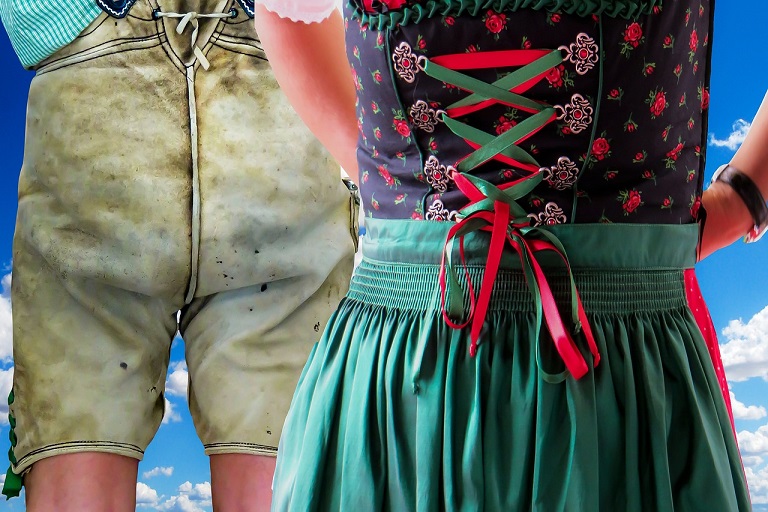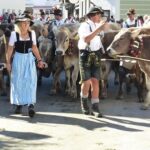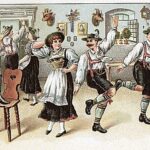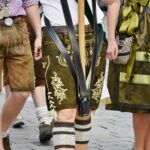
Few national outfits are as iconic as lederhosen and dirndls. Whether at Oktoberfest, folk festivals, or traditional weddings, these garments symbolize Bavarian and Alpine heritage. But beyond their festive appeal, lederhosen and dirndls carry centuries of history, social class distinctions, and regional traditions.
Once practical workwear, these outfits evolved into symbols of German identity. Today, lederhosen and dirndls are worn with pride, nostalgia, and even a touch of modern fashion innovation. So, where did they come from? How have they changed? And why are they still celebrated today? Let’s take a deep dive into the fascinating history of traditional German clothing.
The Origins of Lederhosen and Dirndls
The roots of lederhosen and dirndls trace back to the 18th and 19th centuries, though their cultural significance extends far beyond that.
The History of Lederhosen
Lederhosen, meaning “leather breeches”, originated in Alpine regions (Bavaria, Austria, and Switzerland). They were designed as durable workwear for peasants, hunters, and horsemen. Made from sturdy leather, these trousers were ideal for physical labor, offering flexibility, protection, and resilience.
By the 18th century, noblemen and aristocrats adopted lederhosen, adding intricate embroidery and luxurious materials to distinguish themselves from peasants. This blurred social class lines, and lederhosen became a widely accepted traditional garment.
The History of the Dirndl
The dirndl originated as a practical servant’s dress in Austria and southern Germany during the 19th century. Featuring a bodice, full skirt, apron, and blouse, the outfit was easy to wear, wash, and tailor for different climates.
By the late 19th century, upper-class women in Austria and Bavaria embraced the dirndl as a stylish summer outfit, elevating it from rural workwear to a fashionable, decorative garment. The dirndl soon became a symbol of Alpine heritage, worn at festivals, celebrations, and regional gatherings.
Key Elements and Symbolism of Lederhosen and Dirndls
1. The Anatomy of Lederhosen
Lederhosen vary in length, style, and ornamentation, but all share common elements:
- Short or knee-length leather trousers – Traditionally made from deerskin or goatskin, designed for durability.
- H-shaped suspenders (Hosenträger) – Embroidered and fastened with a decorative crosspiece.
- Embroidered designs – Patterns that reflect family heritage or regional pride.
- Checkered or white shirts – Often paired with lederhosen for a classic Alpine look.
- Knee-high socks (Loferl) and Haferlschuhe (sturdy leather shoes) – Essential for completing the outfit.
2. The Symbolism Behind the Dirndl
Dirndls may seem like simple dresses, but every detail carries meaning:
- Bodice fit – Traditionally tight and structured, symbolizing elegance and femininity.
- Apron bow placement – Indicates relationship status:
- Right side → Married or taken.
- Left side → Single and available.
- Center → Virgin or undecided.
- Back → Widow or waitress.
- Blouse style – Ranges from modest high collars to low-cut necklines, varying by region and occasion.
- Skirt length – Traditionally knee-length or longer, though modern styles offer shorter variations.
Lederhosen and Dirndls in Modern German Culture
1. Oktoberfest and Other Festivals
While lederhosen and dirndls were once daily wear for Alpine communities, today they are most commonly seen at Oktoberfest, folk festivals, and cultural events.
- Oktoberfest (Munich) – The world’s most famous beer festival, where over 70% of attendees wear traditional Bavarian clothing.
- Almabtrieb (Cattle Drive Festival) – Farmers dress in lederhosen and women in dirndls to celebrate the return of livestock from mountain pastures.
- Volksfest (People’s Festival) – Local festivals throughout Bavaria and Austria featuring traditional costumes, music, and food.
2. Dirndls and Lederhosen in Fashion
In recent years, modern designers have reinvented lederhosen and dirndls, blending tradition with contemporary style:
- Luxury brands like Lola Paltinger and Gottseidank create high-end dirndls with silk, lace, and hand-stitched embroidery.
- Casual dirndls and lederhosen are now worn at weddings, concerts, and themed parties.
- Women’s lederhosen have gained popularity, offering a stylish alternative to the traditional dirndl.
Where to Buy Authentic Lederhosen and Dirndls
For those looking to embrace Bavarian tradition, high-quality lederhosen and dirndls can be found in:
- Munich’s Viktualienmarkt – Famous for its handmade traditional outfits.
- Oberstdorf, Bavaria – A town known for its artisanal leather workshops.
- Austrian Trachten Shops – Vienna and Salzburg have historic boutiques specializing in Trachtenwear.
- Online Stores – Many reputable German brands sell authentic lederhosen and dirndls worldwide.
Lederhosen and dirndls have transformed from practical workwear to powerful cultural symbols. Whether at Oktoberfest, regional festivals, or special occasions, these garments preserve German tradition while embracing modern influences.
For travelers, wearing a dirndl or lederhosen is more than just a costume—it’s a connection to history, heritage, and centuries of Bavarian pride. So, whether you’re attending Oktoberfest or just appreciating the artistry behind these garments, traditional German clothing remains an enduring and celebrated tradition.
Want to Learn More About German Traditions?
Explore related articles to dive deeper into German heritage:
- Traditional German Clothing – Dirndl and Lederhosen
- A Glimpse from the Past: Traditional Bavarian Clothing
- The Rich Tapestry of German Traditions
- The Schuhplattler: A Tradition of Bavarian Dance
- Traditional German Clothing: The Stories Behind the Styles
- Beyond Bavaria: Regional Costumes You’ve Never Heard Of
- Modern Tracht: How Germans Are Redefining Traditional Fashion







